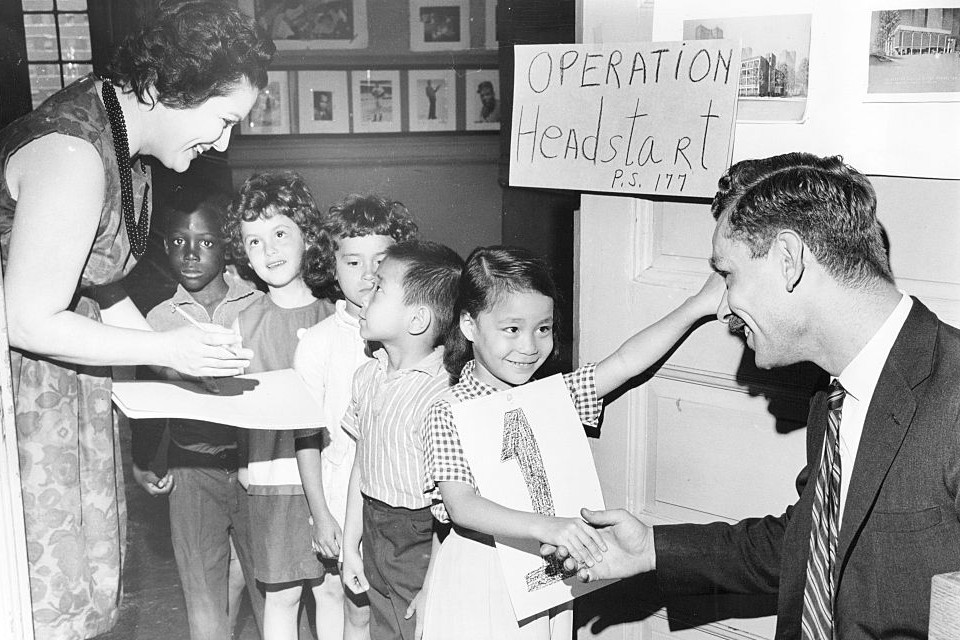The Never-Ending Struggle to Improve Head Start
The federal government has invested billions in preschool, but there’s still lots of room to grow.

In this New York Post photo from the summer of 1965, Elizabeth Ching is first in line at PS 177 in New York City to register for Head Start.Louis Liotta (c) NYP Holdings, Inc. / Getty Images
This story is the third in a series about public preschools that will also examine preschool solutions found in other countries, the condition of preschool teachers, and the political future of preschool. The first story, about how little the U.S. invests in young children, can be found here. The second story, about how Boston’s preschool success is “percolating up” to later grades, can be found here.
PORTLAND, Ore.—Fifty-one years ago in the White House Rose Garden, former President Lyndon B. Johnson announced the launch of Head Start.
“Five- and 6-year-old children are inheritors of poverty's curse and not its creators,” Johnson told his audience as he explained that the federal government would be, for the first time, funding education and health services for children living in poverty in the form of a public preschool program. That first summer, according to a press release from the time, the program was to serve 530,000 children in 11,000 centers at a cost of $112 million, or $857 million in today’s dollars.
“This program this year means that 30 million man-years—the combined lifespan of these youngsters—will be spent productively and rewardingly, rather than wasted in tax-supported institutions or in welfare-supported lethargy,” Johnson promised.
But has that come to pass? No rigorous research project followed the children Johnson was talking about to determine whether now, in their mid-50s, the 1965 Head Start graduates are living the productive and rewarding lives predicted for them. Critics charge that Head Start is a big federal program spending billions of tax dollars on a pipe dream: that the effects of being born into poverty can be averted for a lifetime with a few hours a day spent in a classroom at age 4. On the other hand, its champions argue that everything Johnson predicted is still possible, if only the country gives the program the resources it needs to succeed.
Today, Head Start is nearing the end of a decade of big reforms, meant to improve quality and get closer to meeting the goals that Johnson laid out for it when he announced this new front in his War on Poverty. Simultaneously, cities and states are increasing their public preschool enrollments slowly, but steadily. If all continues apace, the largest public program in the country could be just one step ahead of the locals, creating a roadmap for how to operate a public preschool program big enough to serve more than 1 million children without sacrificing quality.
One of the key elements of Head Start has always been its emphasis on local control. Rather than rolling out a one-size-fits-all program, the idea was to give Head Start Preschool Program Has Room for Improvement - The Atlantic:
